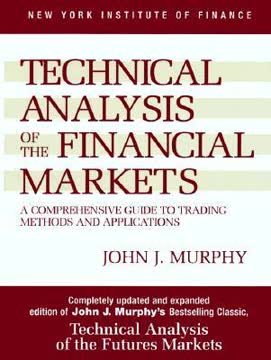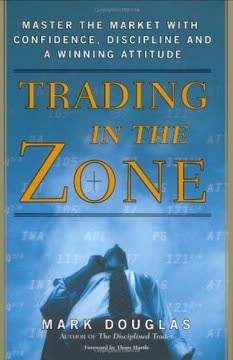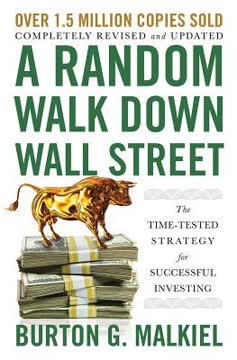重点摘要
1. 掌控心理:情绪是交易成功的最大敌人
“没有人能一边嗨一边赚钱。”
控制情绪。 市场无情,情绪化的决策往往导致财务崩溃。成功的交易者以冷静理性的心态面对市场,专注于交易计划,而非胜利的兴奋或失败的沮丧。
识别心理陷阱。 常见误区包括:
- “大脑神话”:认为成功交易者掌握秘密知识
- “自动驾驶神话”:完全依赖自动化系统
- “资金不足神话”:将亏损归咎于资金不够
培养心理纪律。 把交易当作严肃的事业,而非游戏或娱乐。采取有效策略管理压力,例如:
- 记录交易日志,追踪决策与情绪
- 设定明确的入场、出场及风险管理规则
- 定期复盘,学习胜负经验
2. 理解市场心理:趋势反映大众行为
“市场不是被事实推动,而是被人群对事实的认知和反应所驱动。”
市场映射人性。 价格反映所有参与者的集体决策,受情绪、信念和信息反应驱动。理解群体心理是成功交易的关键。
识别趋势阶段。 市场趋势通常经历:
- 积累期:有识之士开始买入
- 公众参与期:趋势明显,吸引更多买家
- 分配期:聪明资金开始卖给后入场者
- 恐慌期:趋势反转,往往剧烈下跌
利用指标判断市场情绪。 诸如新高新低指数、MACD柱状图、随机指标等工具可帮助:
- 确认趋势强度
- 识别潜在反转
- 判断超买超卖状态
3. 构建稳健交易系统:技术分析与风险管理相结合
“交易系统必须结合趋势跟踪指标与震荡指标。”
打造全面系统。 成功交易方法融合多要素:
- 技术分析识别趋势及买卖点
- 基本面分析提供长期市场背景
- 风险管理规则保护资金
- 心理准备与纪律执行
多指标配合。 结合趋势指标(如均线、MACD)与震荡指标(如随机指标、RSI)以:
- 确认趋势
- 识别反转信号
- 过滤虚假信号
严格风险管理。 关键原则包括:
- 单笔交易风险不超过账户资金的2%
- 使用止损单限制亏损
- 部分获利了结,锁定收益并降低风险
4. 多周期分析:运用三重屏交易系统
“三重屏交易系统结合趋势指标与震荡指标,分析多个时间周期的市场。”
多维度分析市场。 三重屏系统通过三层“筛选”过滤交易信号:
- 长期趋势(如周线):确定整体市场方向
- 中期趋势(日线):寻找逆势入场机会
- 短期时机(分时):精确把握入场点
顺势而为。 仅做与长期趋势一致的交易:
- 上升趋势中,逢短期回调买入
- 下降趋势中,逢短期反弹做空
多指标跨周期配合。 不同周期使用不同指标:
- 周线用趋势指标(如MACD柱状图)
- 日线用震荡指标(如力量指数、Elder-ray)
- 短线用价格行为或动量指标
5. 掌握关键技术指标:MACD、随机指标与Elder-ray
“Elder-ray帮助你洞察市场中多空力量的真实强弱。”
精通核心指标。 专注理解并有效运用以下强大工具:
MACD(指数平滑异同移动平均线):
- 识别趋势及潜在反转
- 通过线条交叉和背离发出买卖信号
随机指标:
- 测量动能,判断超买超卖
- 适合震荡行情交易
Elder-ray:
- 将当前价格与移动平均线比较
- 揭示多头与空头的相对强度
寻找指标趋同。 多个指标同时发出信号时,交易信号最为强烈。
关注背离现象。 价格创新高/低而指标未同步,往往预示反转。
6. 实施有效资金管理:生存是首要目标
“资金管理的首要目标是确保生存。”
优先保护资本。 没有资金就无法交易。核心原则包括:
- 永远不要冒超出承受范围的风险
- 避免过度杠杆
- 通过仓位控制分散风险
设定合理目标。 追求稳定持续的收益,而非快速暴富:
- 年收益25%-30%即为优异表现
- 注重长期建立良好交易记录
遵守2%规则。 单笔交易风险不超过账户资金的2%:
- 限制连续亏损的影响
- 保证多次亏损后账户依然安全
管理盈利交易。 保护利润,降低风险:
- 使用移动止损锁定收益
- 在预定点位部分获利了结
- 让盈利交易顺势发展,同时控制风险
7. 持续学习与适应:市场变化,你也要变化
“市场永远在变,昨日有效的方法今天未必适用,明年更难奏效。”
保持灵活。 市场唯一不变的就是变化。成功交易者会:
- 定期复盘并更新交易系统
- 适应市场环境和波动变化
- 接纳新思路和新技术
拥抱持续学习。 通过以下方式提升技能与知识:
- 研究市场历史与过往趋势
- 分析自身交易(胜负皆学)
- 关注经济与地缘政治动态
测试与优化策略。 利用回测和模拟交易:
- 验证新交易想法,避免实盘盲目冒险
- 优化系统参数
- 增强对交易计划的信心
培养成长心态。 将挑战和挫折视为学习和进步的机会:
- 深入分析亏损交易,汲取教训
- 寻求其他交易者或导师的反馈
- 保持谦逊,承认永远有提升空间
最后更新日期:
FAQ
What's Trading for a Living by Alexander Elder about?
- Focus on Psychology: The book emphasizes the critical role of psychology in trading, highlighting how emotions like fear and greed can impact decision-making.
- Trading Tactics and Money Management: It offers practical trading tactics and money management strategies, essential for long-term success in the markets.
- Three Pillars of Trading: The book is structured around three main pillars: psychology, market analysis, and money management, each contributing to a trader's success.
Why should I read Trading for a Living by Alexander Elder?
- Expert Insights: Written by Dr. Alexander Elder, a psychiatrist and professional trader, the book combines psychological principles with trading strategies.
- Comprehensive Guide: It serves as a complete guide for both novice and experienced traders, offering insights into trading psychology, technical analysis, and risk management.
- Real-World Applications: Dr. Elder shares personal experiences and lessons learned, making the content relatable and applicable to real-world trading scenarios.
What are the key takeaways of Trading for a Living by Alexander Elder?
- Self-Discipline is Crucial: The book stresses the importance of self-discipline in managing emotions and adhering to trading plans.
- Understanding Market Psychology: Recognizing crowd behavior and mass psychology can help traders make informed decisions.
- Risk Management is Essential: Effective risk management is vital for long-term survival, as even the best strategies can fail without it.
How does Trading for a Living define trading psychology?
- Key to Success: Psychology is highlighted as the key to successful trading, with an emphasis on understanding one's own emotions and biases.
- Emotional Roller Coaster: Trading is described as an emotional roller coaster, where managing emotions is essential for maintaining discipline.
- Self-Analysis: Keeping a trading diary is encouraged to analyze decisions and emotional responses, helping identify patterns of behavior.
What is the Triple Screen Trading System in Trading for a Living?
- Three-Step Approach: It involves analyzing the market on three different timeframes to confirm trading signals, filtering out noise for reliable signals.
- Combining Indicators: The system uses a combination of trend-following indicators and oscillators to identify entry and exit points.
- Risk Management Focus: Emphasizes strict money management rules, ensuring traders do not risk more than a predetermined percentage of their capital.
What are the different types of gaps mentioned in Trading for a Living?
- Common Gaps: Occur in quiet markets and are quickly closed, often not significant for trading decisions.
- Breakaway Gaps: Signal the beginning of a new trend with increased volume, indicating a strong shift in market sentiment.
- Exhaustion Gaps: Occur at the end of a trend, signaling a potential reversal and providing excellent shorting opportunities.
How does Trading for a Living explain the concept of trendlines?
- Identifying Trends: Trendlines connect significant highs or lows on a chart, helping traders visualize market direction.
- Support and Resistance: They can act as support in uptrends and resistance in downtrends, providing critical levels for trading decisions.
- Angle of the Trendline: The slope indicates trend strength, with steeper lines suggesting stronger trends.
What are the best quotes from Trading for a Living by Alexander Elder and what do they mean?
- "The key to winning was inside my head and not inside a computer.": Emphasizes the importance of psychology over technical tools in trading.
- "You can have a brilliant trading system, but if your money management is bad, then a short string of losses will destroy your account.": Highlights the necessity of effective risk management.
- "Do not confuse brains with a bull market.": Cautions against overconfidence during market upswings, reminding traders to remain disciplined.
How can I apply the concepts from Trading for a Living to my trading strategy?
- Develop a Trading Plan: Create a detailed plan including entry and exit strategies, risk management rules, and psychological self-assessments.
- Monitor Market Psychology: Pay attention to crowd behavior and sentiment indicators to gauge market mood.
- Practice Risk Management: Implement strict money management rules to protect your account from significant losses.
How does the Triple Screen trading system work in Trading for a Living?
- Three Screens for Analysis: Analyzes trades through three timeframes: long-term trend, intermediate trend, and short-term price action.
- First Screen - Market Tide: Uses a trend-following indicator on a weekly chart to identify the primary trend.
- Second Screen - Market Wave: Applies oscillators to daily charts to find entry points against the tide.
What is the significance of emotional control in trading as discussed in Trading for a Living?
- Impact of Emotions: Emotions like fear and greed can cloud judgment, leading to poor trading decisions.
- Psychological Strategies: Offers strategies for developing emotional resilience, such as setting clear trading rules.
- Long-Term Success: Emotional control is key to achieving long-term success, helping traders follow strategies and avoid costly mistakes.
How can I improve my trading discipline as suggested in Trading for a Living?
- Set Clear Rules: Establish and adhere to clear trading rules, including entry and exit points, risk limits, and profit targets.
- Emotional Awareness: Recognize emotional triggers and their effects on trading decisions, practicing mindfulness and self-reflection.
- Regular Review: Conduct regular reviews of trading performance to identify areas for improvement and reinforce disciplined behavior.
评论
《以交易为生》总体评价积极,平均评分为4.05分(满分5分)。读者称赞其对交易心理、策略及资金管理的全面阐述,认为无论初学者还是有经验的交易者均能从中受益。该书的优势在于对市场心理、风险控制和技术分析的深刻见解。然而,也有部分读者指出书中案例略显陈旧,文风存在重复之处。总体来看,读者认可埃尔德直截了当的表达方式和实用建议,普遍认为这是有志于交易者必读之作。
Similar Books

















